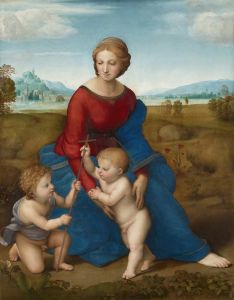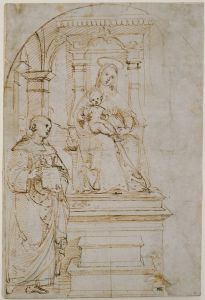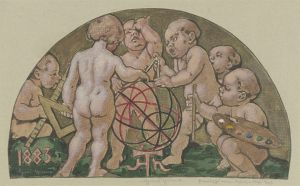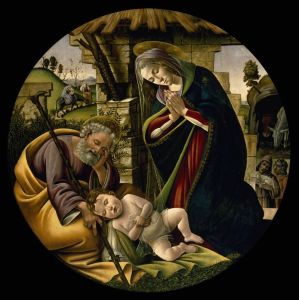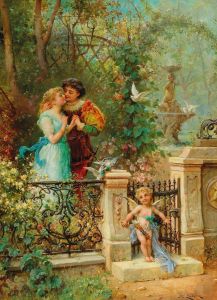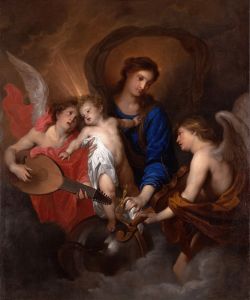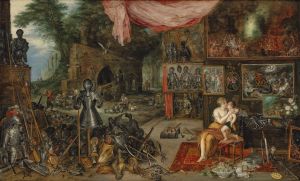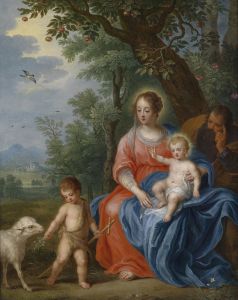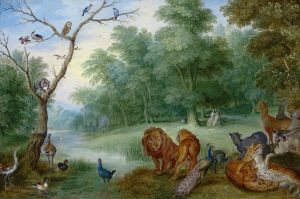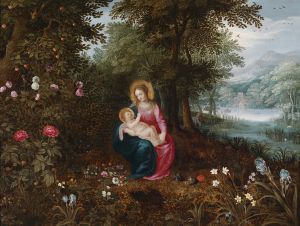
The Virgin and Child in a cartouche surrounded by a garland of flowers
A hand-painted replica of Jan Brueghel the Younger’s masterpiece The Virgin and Child in a cartouche surrounded by a garland of flowers, meticulously crafted by professional artists to capture the true essence of the original. Each piece is created with museum-quality canvas and rare mineral pigments, carefully painted by experienced artists with delicate brushstrokes and rich, layered colors to perfectly recreate the texture of the original artwork. Unlike machine-printed reproductions, this hand-painted version brings the painting to life, infused with the artist’s emotions and skill in every stroke. Whether for personal collection or home decoration, it instantly elevates the artistic atmosphere of any space.
"The Virgin and Child in a Cartouche Surrounded by a Garland of Flowers" is a painting attributed to Jan Brueghel the Younger, a prominent Flemish Baroque artist. Jan Brueghel the Younger (1601–1678) was the son of Jan Brueghel the Elder and the grandson of Pieter Bruegel the Elder, both of whom were highly influential painters in their respective eras. Jan Brueghel the Younger is known for continuing the artistic traditions of his family, particularly in the genres of still life, landscapes, and religious compositions.
This artwork exemplifies a collaborative tradition in Flemish painting, where different artists would contribute their expertise to a single work. In this case, the central cartouche depicting the Virgin Mary and the Christ Child is surrounded by a meticulously painted garland of flowers. The Virgin and Child are a common subject in Christian art, symbolizing purity, maternal love, and divine grace. The floral garland, a hallmark of the Brueghel family's oeuvre, reflects the Baroque fascination with nature, abundance, and intricate detail.
The painting's composition is characteristic of the "garland paintings" popularized by Jan Brueghel the Elder and his contemporaries. These works often combined religious imagery with elaborate floral arrangements, serving both as devotional objects and as celebrations of the natural world. The flowers in the garland are rendered with remarkable precision, showcasing the artist's skill in botanical illustration. Each bloom is depicted with attention to texture, color, and form, reflecting the scientific interest in flora during the 17th century.
While the central cartouche is attributed to Jan Brueghel the Younger, it is not uncommon for such works to involve collaboration with other artists, particularly for the religious figures. However, specific details regarding potential collaborators for this painting are not documented. The integration of the Virgin and Child within the floral garland creates a harmonious balance between the spiritual and the earthly, a theme frequently explored in Baroque art.
The painting is believed to have been created during the mid-17th century, a period when Jan Brueghel the Younger was actively producing works in Antwerp. His studio was known for replicating popular compositions, and it is possible that multiple versions of this theme exist. The exact provenance of this specific painting is not well-documented, but similar works by Jan Brueghel the Younger and his workshop are held in various museum collections and private holdings.
"The Virgin and Child in a Cartouche Surrounded by a Garland of Flowers" is a testament to the enduring appeal of devotional imagery combined with the naturalistic detail that defined Flemish Baroque art. It reflects the artistic legacy of the Brueghel family and their contribution to the development of still life and religious painting in Europe.





